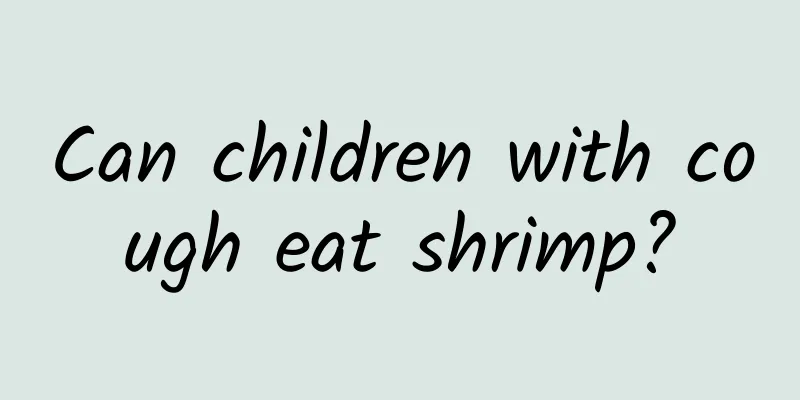How to treat hand, foot and mouth disease in a 4-year-old child

|
Hand, foot and mouth disease in 4-year-old children is mostly caused by viral infection. Symptomatic treatment should be given, and good hygiene habits should be maintained to avoid cross infection. Specific treatment may include medication, home care and diet adjustment. If the symptoms are severe, medical treatment should be sought promptly. 1. Drug treatment Hand, foot and mouth disease is mostly caused by infection with coxsackievirus or enterovirus 71. There is no specific medicine for it, and treatment is generally based on symptoms. If a child has a fever, he or she can take children's antipyretics such as acetaminophen or ibuprofen as prescribed by the doctor; if oral ulcers are obvious, children's local analgesic gels such as lidocaine gel can be used to relieve discomfort; if the rash is itchy, antihistamines such as loratadine syrup can be selected. It is not recommended to give children antibiotics on their own, and they should only be used when the doctor confirms that there is a bacterial infection. 2Home Care During the treatment process, home care is particularly important. Children should be allowed to rest more and avoid strenuous activities; keep their mouths clean and rinse their mouths with warm water after meals and before going to bed to prevent bacteria from infecting the ulcer area; use warm water to gently rinse the body when bathing to avoid irritating the rash; parents should change their children's underwear and bedding on time every day to avoid bacterial growth. Children should try to limit contact with other children to prevent transmission to others or secondary infection. 3. Diet adjustment Hand, foot and mouth disease is often accompanied by oral ulcers or sore throat, so children may have difficulty eating. It is recommended to prepare warm, soft, and easily digestible food for children, such as porridge, noodles, or stewed eggs, and avoid hot, salty, and sour foods to reduce irritation to the oral mucosa. At the same time, children should be encouraged to drink more water to replenish body fluids and avoid dehydration caused by fever and reduced food intake. It is advisable to feed small amounts and multiple times to avoid forced feeding, which will affect the child's mood. Hand, foot and mouth disease can usually heal itself within 7-10 days, but if a child has severe symptoms such as persistent high fever, lethargy, shaking limbs or convulsions, he or she should go to the hospital immediately. Parents should pay attention to the prevention and control of the disease, such as washing hands frequently, cleaning toys and tableware, and avoiding taking children to crowded places during the epidemic to provide solid protection for their health. |
<<: Symptoms of jaundice caused by neonatal hepatitis
>>: Vitamins for treating convulsions in children and vomiting during pregnancy
Recommend
How to tell if it's hand, foot and mouth disease
Hand, foot and mouth disease is a common infectio...
Can I get a vaccination after taking Children's Cold Granules?
After drinking Children's Cold Granules, it i...
What are the secrets to preventing and treating breast milk diarrhea?
What are the secrets to prevent and treat breast ...
Effective folk remedy for the treatment of acute non-icteric hepatitis B
Effective folk remedy for the treatment of acute ...
How to diagnose hernia in children? Check whether there is any abnormality in the inguinal cleft
Pediatric hernia is one of the most common pediat...
How long does hand, foot and mouth disease last in children?
The onset time of hand, foot and mouth disease in...
What medicine should children take for acute laryngitis
Children with acute laryngitis need to take medic...
How to deal with indigestion in children What should be paid attention to when children have indigestion
Children have a high status in the family, and th...
Symptoms of hand, foot and mouth disease in adults
Adults with hand, foot and mouth disease often pr...
What should we pay attention to when caring for children with jaundice at home? What are the misunderstandings in the treatment of neonatal jaundice?
Neonatal jaundice is a common disease among newbo...
What are the dangers of kidney disease in children?
Children can also suffer from kidney disease. Wha...
The initial symptoms of jaundice in the brain
Jaundice in the brain is also known as neonatal b...
What should I pay attention to when I have pneumonia in children?
Neonatal pneumonia is a very common disease nowad...
How to prevent indigestion in children? What to eat for indigestion in children?
Children's digestive system diseases are comm...
What is the pediatric phlegm-relieving and cough-relieving granules? How to treat children's cough with a lot of phlegm?
Pediatric phlegm-relieving and cough-relieving gr...









